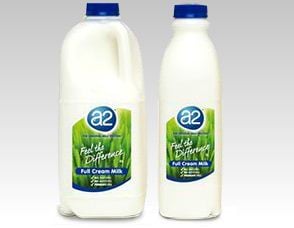Speaking with DairyReporter.com, Diana Cowland, senior health and wellness analyst, Euromonitor, said that milk's image as an affordable staple in North America and Western Europe is a "real hurdle" for the manufacturers of milk enriched with, for example, omega 3.
In Asia, however, where mainstream milk consumption is on the rise, the premium price and varied taste of fortified and functional milk products does not put consumers off.
“We see a large geographical difference with these products,” said Cowland.
“Consumers in Western Europe, for example, aren’t as willing to buy them because of taste and price,” she said. “But it is a different picture in Asia.”
"It's a hurdle"
In 2013, global fortified and functional fresh milk sales totaled US$72.3bn (€56.1bn), according to Euromonitor.
Asia Pacific accounted for around US$24.3bn (€18.9bn) of this total, Latin America US$14bn (€10.9bn), North America US$16.6bn (€12.9bn), Western Europe US$12.1bn (€9.4bn), and Australasia US$1.55bn (€1.2bn).
Global sales are forecast, however, to fall US$346.5m (€269m) between 2013 and 2018 - driven by decreases of around US$1.2bn (€929m) and US$86.3m (€67m) in North America and Western Europe respectively.
Fortified and functional market growth in the Asia Pacific region (US$341.5m, €265m), Latin America (US$399.7m, €310.3m), and Australasia (US$174.9m, €135.8m), will, however, offset the declining interest in North America and Western Europe.
Cowland attributed the lesser success of the products in Western Europe and North America to the fact "the milk category is incredibly price sensitive" and "they taste different to normal milk."
"In Western Europe, the most popular will be those that contain vitamins and minerals. With those that contain omegas and plant sterols, the taste profile is just too different, so they're likely to go for normal milk."
"Supermarkets drive down the price of milk because it brings people in," she said. "It's a hurdle for fortified and functional fresh milk brands because they can't compete on price."
Consumer understanding
a2 milk is arguably among the most successful premium milk products in the world currently.

It is rich in A2 beta casein protein but contains no A1 beta casein protein, which has been linked with digestive discomfort.
The premium product, which sells for between AU$2.50 (US$2.30, €1.75) and AU$3.00 (US$2.80, €2.00) per litre, has proved extremely popular in Australia and its fresh milk market share Down Under is currently estimated at 9% by value.
The success of a2 milk in the UK has, however, been slower than projected.
According to Cowland, a lack of UK consumer understanding of the a2 milk concept has slowed its uptake, and consumers would be more likely to opt for a non-dairy alternative.
"Consumers are moving towards non-dairy alternatives, such as soy and almond milk, rather than products like a2 milk."
"They understand the benefits of non-dairy alternatives. But the understanding of a2 milk in the UK is just not there," she said.
